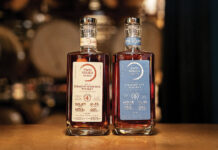Successfully navigating America’s three liquor distribution tiers is super old-school in today’s e-ecommerce economy, but it’s a necessary evil for the craft distiller
What is America’s three-tier distribution system, why do I need a wholesale partner, and how do I know which one is right for me? After all, it’s the law that when you want to expand outside your home county or state, you need a wholesaler or distributor. Direct-to-consumer and interstate D2C shipping is still a long way off in most states.
The three-tier spirits distribution system was established as America was coming out of the prohibition period in 1933, and has changed very little since then. Tier 1 is the distiller. Tier 2 is the distributor or wholesaler (the two terms are used interchangeably). Tier 3 are retailers—stores, bars and restaurants. It was determined that a distiller would be required to move his products through the three-tier system to bring those products to consumers. (Some states even operate on 4-tier systems, but let’s ignore that for now.)
Not all licensed distributors are born alike. There are usually three types of distributors available to choose from, we call these “A,” “B” and “C” level distributors.
“A” distributors are the biggest and most powerful distributors within the market with large sales teams, multiple sales divisions and the biggest account universes serviced. An “A” distributor has a very large portfolio of brands and includes the brands of “Major” spirits suppliers. While “A” distributors have many strengths, a concern may be that your brands get lost within their large portfolio and receive minimal attention from their sales force that is focused on the major suppliers’ brands.
“B” distributors are smaller than “A” distributors in terms of the size of their sales force, number of brands within their portfolios and their account universe that they service. They typically don’t represent the brands of “Major” suppliers. While with a “B” distributor your brands are a bigger fish in a smaller pond, they typically have a significantly smaller account universe and your brands will not be available in many locations.
“C” distributors are smaller than “B” distributors in terms of the size of their sales force and account universe and typically have a rather large portfolio of niche/ eclectic brands that are most relevant to a select segment of retail and On-Premise operators who cater to an upscale consumer demographic. Depending on how your brands are positioned, a “C” distributor may be a good choice, but your brand availability will be quite limited.
So How is a Girl to Choose?
What is the “right” distributor partner for your brands? And how do you get the right one to pick you? The typical distributor (of which there are thousands) only green-lights 5% of the brands who pitch them (of which where are tens of thousands). A distributor is looking for only the brands they can sell—excellent flavors, differentiated branding and packaging, and proven product-market fit.
Your brand needs to provide the distributor incremental sales alongside their existing portfolio of brands. Truth is, distributors coin-operated and want you to do most of the work for them: they need your help to structure sell-in deals, sales force incentives, merchandising materials, trial and tasting programs, and consumer “pull.”
It’s your job to understand what accounts the distributor services, and whether these are right for your brand. If a distributor services Japanese restaurants and liquor stores in Asian communities, your shochu and whiskey and vodka brands may work, but your tequila or moonshine brand may want to go elsewhere.
Calibrating your distributor pitch is critical. This pitch must include:
Your brands’ distinction(s)—flavors, packaging, consumer success, pricing, form factors (e.g., straight bottles, RTD, haptics)
Strong distributor programming—sales incentives, sell-in deals, merchanding, tasting, events
Meaningful marketing support—advertising, social media, product placement in media or movies, influencer endorsements, in-store or in-restaurant displays, bartender classes, YouTube videos
While the three-tier distribution system is antiquated, and not yet in sync with today’s ecommerce economy, changes in the system will be slow. That’s because the current system benefits select organizations including the “A” distributors and “Major” suppliers who will continue to work to lobby lawmakers to protect their franchises. So strap in, and get ready to do battle with the three-tier system. You’ll be glad you did.








